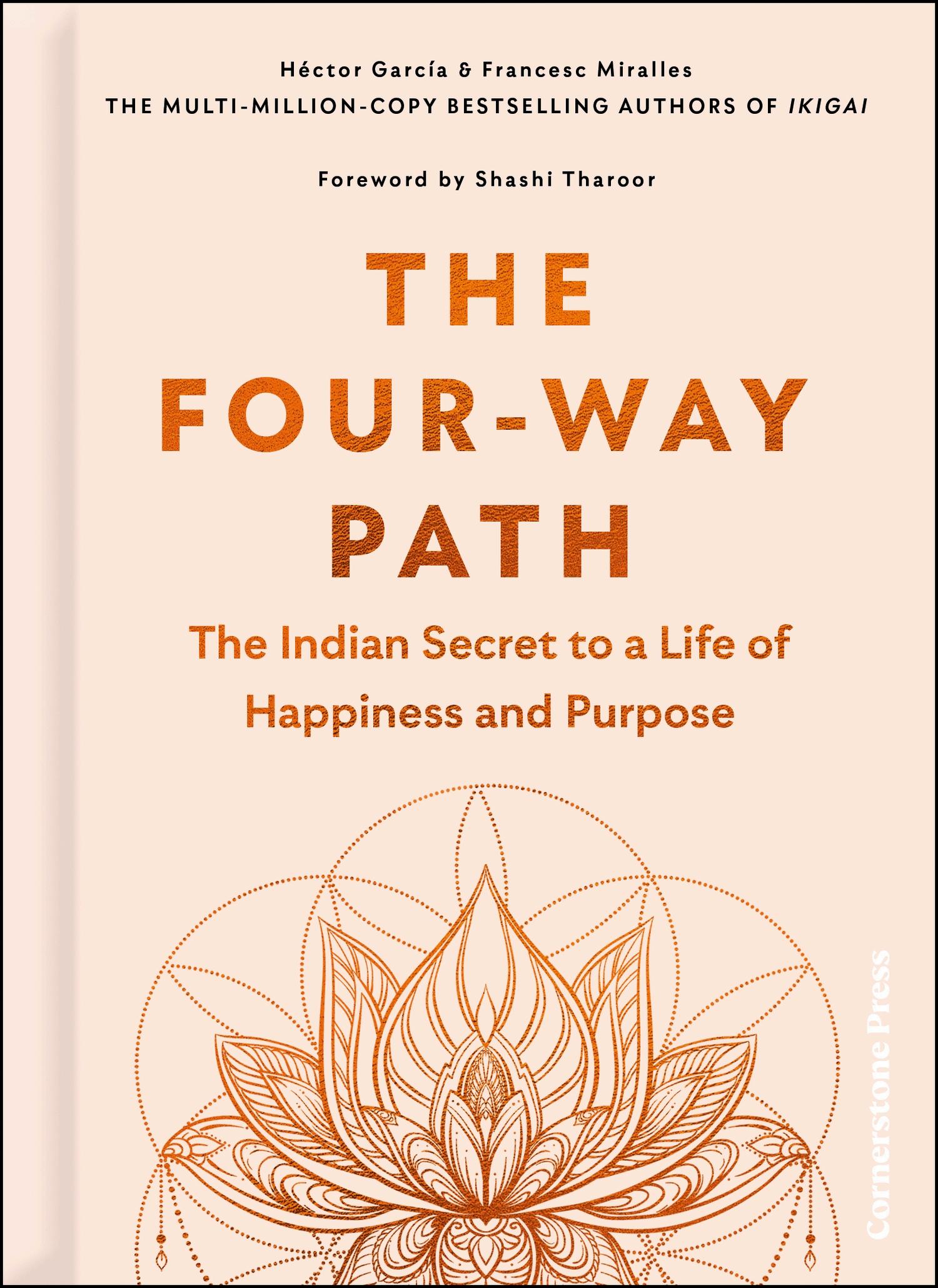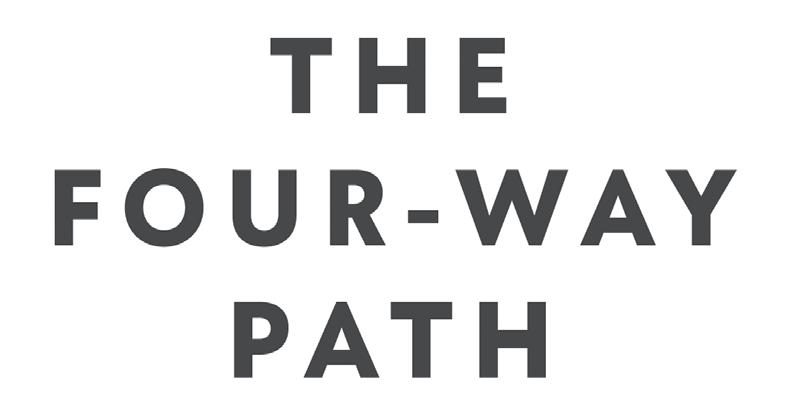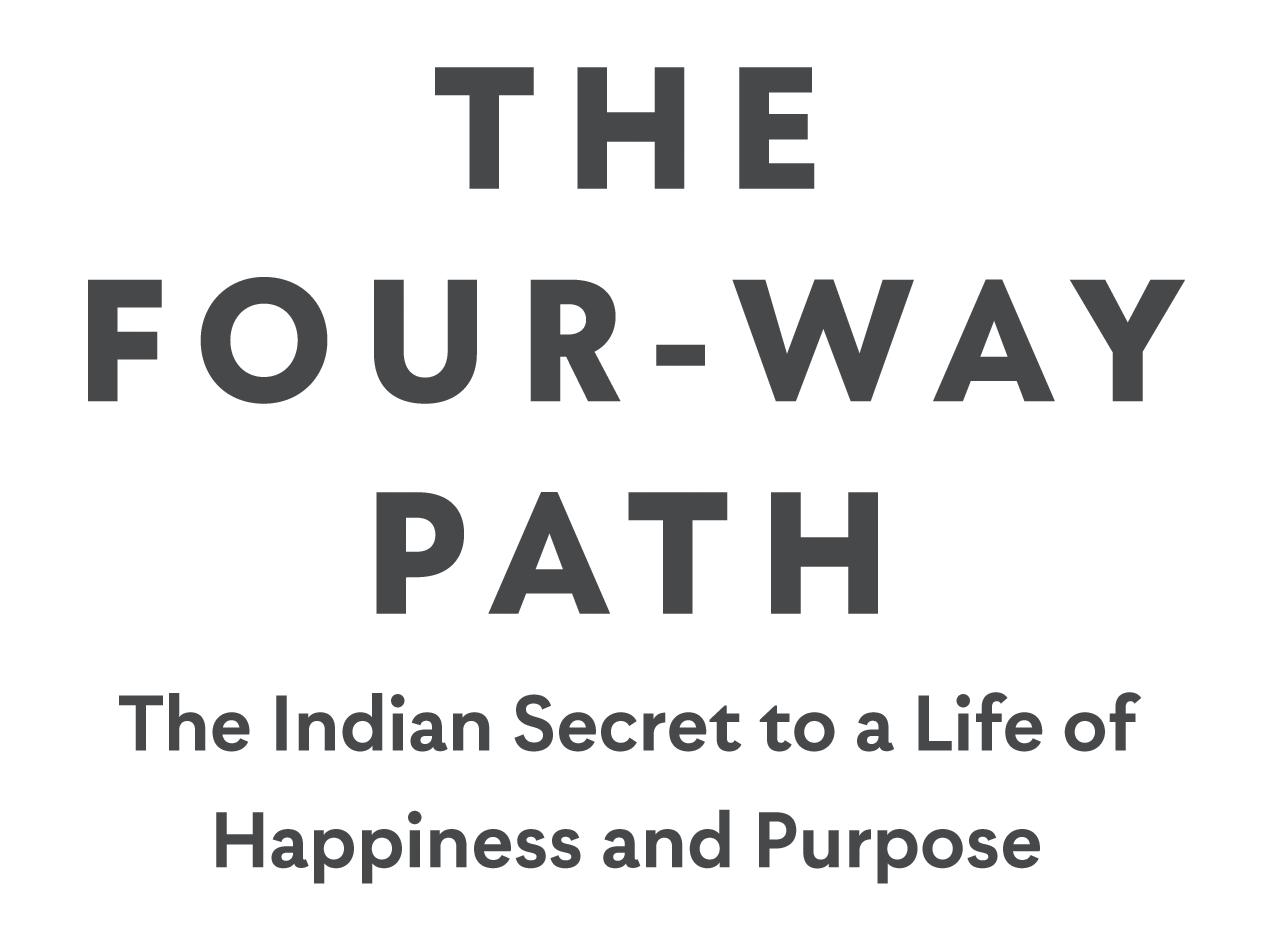

Also by Héctor García and Francesc Miralles Ikigai
The Book of Ichigo Ichie

Translated by Charlotte Whittle
Foreword by Shashi Tharoor
Cornerstone Press 20 Vauxhall Bridge Road
London SW 1V 2SA
Cornerstone Press is part of the Penguin Random House group of companies whose addresses can be found at global.penguinrandomhouse.com
Copyright © Héctor García and Francesc Miralles 2022
Translation copyright © Charlotte Whittle 2024 Foreword copyright © Shashi Tharoor 2024
Héctor García and Francesc Miralles have asserted their right to be identified as the authors of this Work in accordance with the Copyright, Designs and Patents Act 1988.
Originally published in Spain as Namasté: La vía india a la felicidad, la realizacion y el éxito by Ediciones Urano, Barcelona, in 2022
First published in the US by Viking, an imprint of Penguin Random House LLC , New York in 2024
First published in the UK by Cornerstone Press in 2024
www.penguin.co.uk
A CIP catalogue record for this book is available from the British Library.
ISBN : 9781529908206
Illustrations copyright © Marisa Martínez 2022
Map of the British Indian Empire on p. 14 published in the 1909 edition of the Imperial Gazetteer of India, via Wikipedia
Designed by Cassandra Garruzzo Mueller
Printed and bound in Great Britain by Clays Ltd, Elcograf S.p.A.
The authorised representative in the EEA is Penguin Random House Ireland, Morrison Chambers, 32 Nassau Street, Dublin D02 YH 68
www.greenpenguin.co.uk
Penguin Random Hous e is committed to a sustainable future for our business , our readers and our planet. is book is made from Forest Stewardship Council® certified paper.
Advaita:Non-Duality109
TheUniversalLawsofHappiness121
Karma:TheHistoryofYourLives137
SamsaraandNirvana149
III.
THEPRACTICEOFHAPPINESS
Practical Wisdom from India for Essential Well- Being
Pranayama:BreathingIsLiving161
Yoga:UnitingBody,Mind,andSpirit173
Ayurveda:AncestralMedicine181
Champissage:TheIndianHeadMassage193
Tantra:TheSacredEncounter199
Meditation:TheOriginofMindfulness207
Epilogue:GreatSoulsAreLikeClouds215
TheTenIndianLawsofHappiness217
Acknowledgments221
SuggestionsforFurtherReading223
Foreword
This wonderful book by the authors of Ikigai , a worldwide bestseller about a Japanese concept that translates roughly to “the purpose of one’s life,” brings a similar approach to the Hindu way of life. It readably conveys some of the richness of Hindu culture and spirituality, as well as many Hindu practices like yoga, breathing, and meditation, to identify ten Indian rules for happiness that everyone can learn from and abide by.
But what does being a Hindu mean? My Hinduism is a lived faith; it is a Hinduism of experience and upbringing, a Hinduism of observation and conversation, not one anchored in deep religious study (though of course the two are not mutually exclusive). I grew up knowing few mantras, just some snatches of a couple of hymns, and practically no Sanskrit; my knowledge of Hindu sacred texts and philosophies came entirely from reading them in English
translation. (When I went to a temple, I prayed in an odd combination of English, Sanskrit, and my “mother tongue,” Malayalam, instinctively convinced that an omniscient God would naturally be multilingual.)
The fi rst challenge in describing Hinduism, of course, is defi nitional. The name Hindu itself denotes something less, and more, than a set of theological beliefs. In many languages, French and Persian among them, the word for Indian is Hindu. Originally, Hindu simply meant the people beyond the River Sindhu, or the Indus River. But the Indus is now in Islamic Pakistan; and to make matters worse, the word Hindu did not exist in any Indian language until its use by foreigners gave Indians a term for self- defi nition. Hindus, in other words, call themselves by a label that they didn’t invent in any of their own languages but adopted cheerfully when others began to refer to them by that word. (Of course, many Hindus prefer a different term altogether— Sanatana Dharma , or “eternal faith.”)
Hinduism is thus the name that foreigners fi rst applied to what they saw as the indigenous religion of India. It embraces an eclectic range of doctrines and practices, from pantheism to agnosticism and from faith in reincarnation to belief in the caste system. But none of these constitute
an obligatory credo for a Hindu: there is none. We have no compulsory dogmas.
This is why I am more comfortable with the tenets of Hinduism than I would be with those of the other faiths of which I know. I have long thought of myself as liberal, not merely in the political sense, or even in relation to principles of economics, but also as an attitude toward life. To accept people as one fi nds them, to allow them to be and become what they choose, and to encourage them to do whatever they like (so long as it does not harm others) is my natural instinct. It is also what Hinduism teaches. As the great preacher Swami Vivekananda put it when he addressed the World’s Parliament of Religions in Chicago in 1893, “We believe not only in universal toleration, but we accept all religions as true.” He spoke for a faith that prescribes not just tolerance but also acceptance. Tolerance is essentially a patronizing virtue: the tolerant person assumes he has the truth but magnanimously is willing to allow others the right to be wrong. But the Hindu, grounded in acceptance, sees truth in all beliefs: he accepts the other’s truth, demanding only that the other accept his truth. Vivekananda often quoted an ancient hymn, the “Shiva Mahimna Stotra,” which declares that just as multiple rivers,
originating in different places, flow down different hills and valleys, some straight, some crooked, but all end up in the same sea, so also all forms of worship reach the same divine.
Raised as I was as a Hindu, I have never found rigid and censorious beliefs appealing to my temperament. In matters of religion, too, I found my liberal instincts reinforced by the faith in which I was brought up. Hinduism is, in many ways, predicated on the idea that the eternal wisdom of the ages and of divinity cannot be confi ned to a single sacred book; we have many, and we can delve into each to fi nd our own truth (or truths). As a Hindu I can claim adherence to a religion without an established church or priestly papacy, a religion whose rituals and customs I am free to reject, a religion that does not oblige me to demonstrate my faith by any visible sign, by subsuming my identity in any collective, not even by a specific day or time or frequency of worship. (There is no Hindu pope, no Hindu Vatican, no Hindu catechism, not even a Hindu Sunday.) As a Hindu I follow a faith that offers to the worshipper a veritable smorgasbord of options of divinities to adore and to pray to, of rituals to observe (or not), of customs and practices to honor (or not), of fasts to keep (or not). I subscribe to a creed that is free of the restrictive dogmas of holy writ,
one that refuses to be shackled to the limitations of a single volume of holy revelation.
Hinduism professes no false certitudes. Its capacity to express wonder at creation and simultaneously skepticism about the omniscience of the Creator is unique to it. Both are captured beautifully in a verse from the thirty-fivehundred-year- old Rig Veda , the “Nasadiya Sukta” (“Creation Hymn”), which memorably ends:
Who really knows? And who can say?
Whence did it all come? And how did creation happen?
The gods themselves are later than creation,
So who knows truly whence this great creation sprang?
Who knows whence this creation had its origin?
He, whether He fashioned it or whether He did not,
He, who surveys it all from the highest heaven,
He knows— or maybe even He does not know.
—Rig Veda 10.129
“Maybe even He does not know”! I love a faith that raises such a fundamental question about no less a supreme being than the Creator of the Universe himself. Maybe he does not know, indeed. Who are we mere mortals to claim a knowledge of which even he cannot be certain?
Hindu thought also makes a virtue out of the unknowability of God. There is a marvelous story in the Upanishads about a sage who is asked to defi ne the nature of God; the wise man, normally loquacious, falls silent. He is pressed by his disciples for an answer, and he replies that his silence was his answer, for the Absolute is silence; the mystery of the divine reality cannot be reduced to words or speech. Neither thought nor words can suffice: “It is not understood by those who understand it,” says the Kena Upanishad, “it is understood by those who do not understand it.” The fi nal words of the Upanishads are “neti, neti”—“not this, not this”—signifying the unspeakability of the Absolute. For many sages, their consciousness of the divine is untranslatable to others, for those who have not attained the same realization cannot grasp it through word or sign: it is “that of which nothing can be said.”
In the twenty-fi rst century, Hinduism has many of the attributes of a universal religion—a religion that is personal and individualistic, that privileges the individual and does not subordinate one to a collective; a religion that grants and respects complete freedom to the believer to fi nd his or her own answers to the true meaning of life; a religion that offers a wide range of choice in religious practice, even in regard to the nature and form of the formless God; a reli-
gion that places great emphasis on one’s mind, and values one’s capacity for reflection, intellectual inquiry, and selfstudy; a religion that distances itself from dogma and holy writ, that is minimally prescriptive and yet offers an abundance of options, spiritual and philosophical texts, and social and cultural practices to choose from. In a world where resistance to authority is growing, Hinduism imposes no authority; in a world of networked individuals, Hinduism proposes no institutional hierarchies; in a world of opensource information sharing, Hinduism accepts all paths as equally valid; in a world of rapid transformation and accelerating change, Hinduism is adaptable and flexible, which is why it has survived for millennia.
Above all, as a Hindu I belong to the only major religion in the world that does not claim to be the only true religion. I fi nd it immensely congenial to be able to face my fellow human beings of other faiths without being burdened by the conviction that I am embarked upon a “true path” that they have missed. Hinduism asserts that all ways of belief are equally valid, and Hindus readily venerate the saints and the sacred objects of other faiths. I am proud that I can honor the sanctity of other faiths without feeling I am betraying my own.
It is very much in the same spirit that Héctor García and
Francesc Miralles have approached this book. They have done a marvelous job of identifying principles, practices, and prescriptions for living from this extraordinary faith, its spiritual and doctrinal offshoots, and the culture it has sustained for five thousand years. I commend their book for delving so accessibly into the complex cultural and spiritual traditions of India, and distilling from them guides for living that should be valuable to everyone with an open mind and a willingness to learn from the wisdom of the ancients.
SHASHI THAROOR
